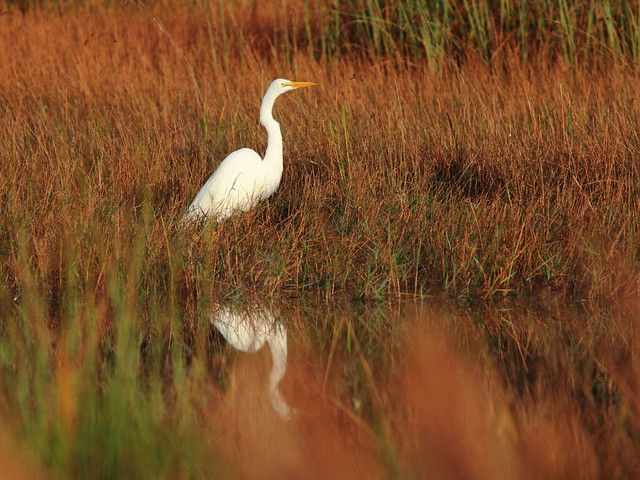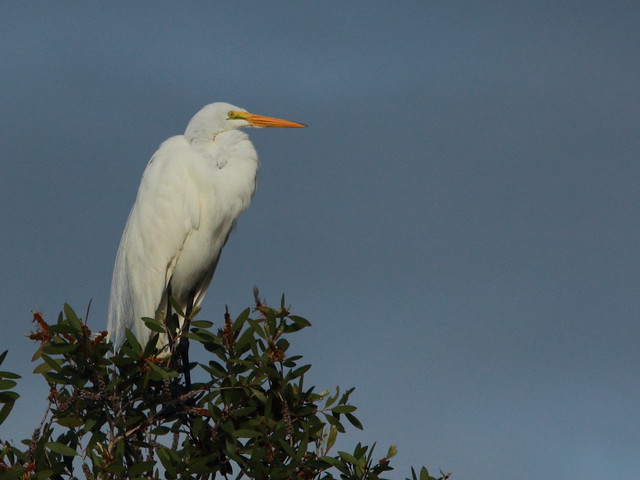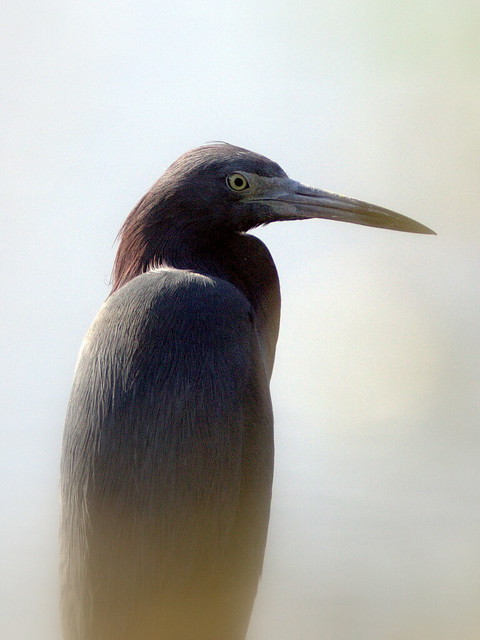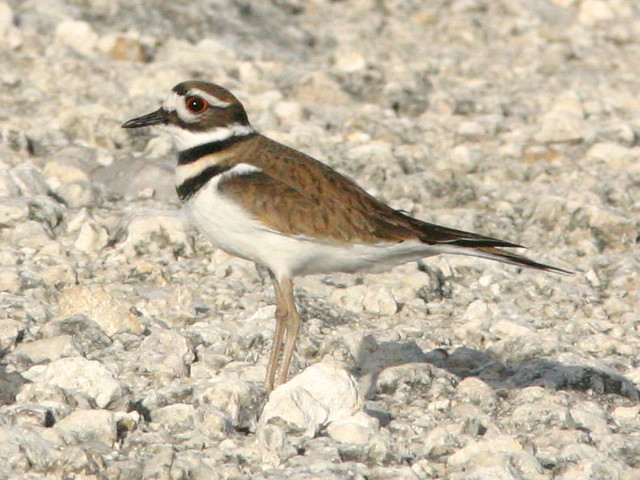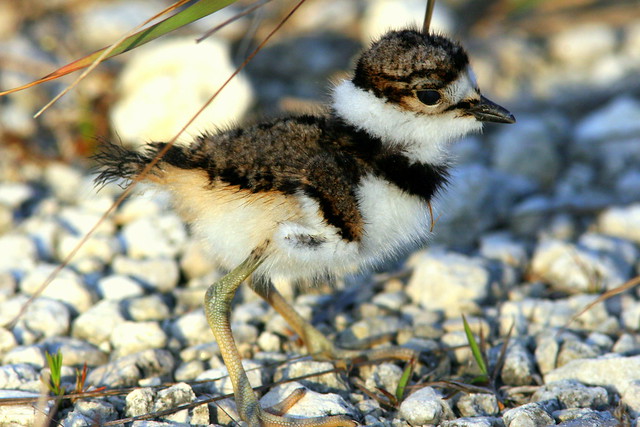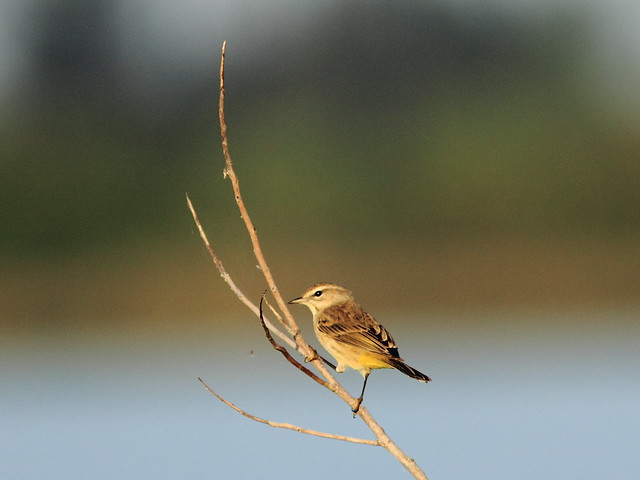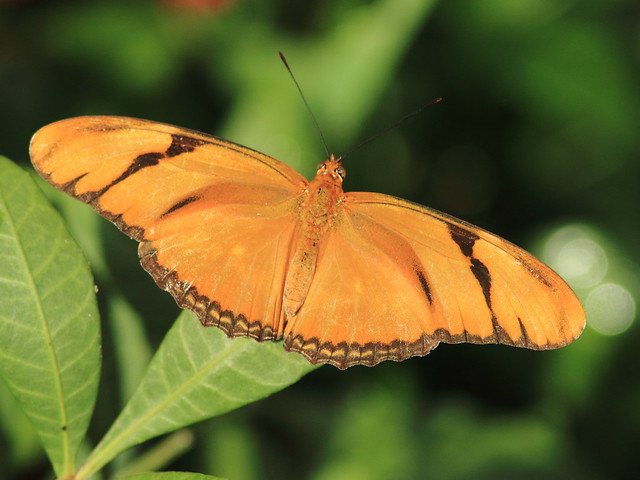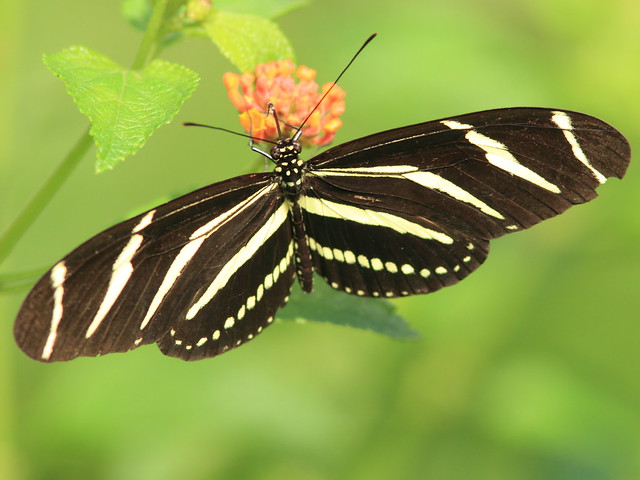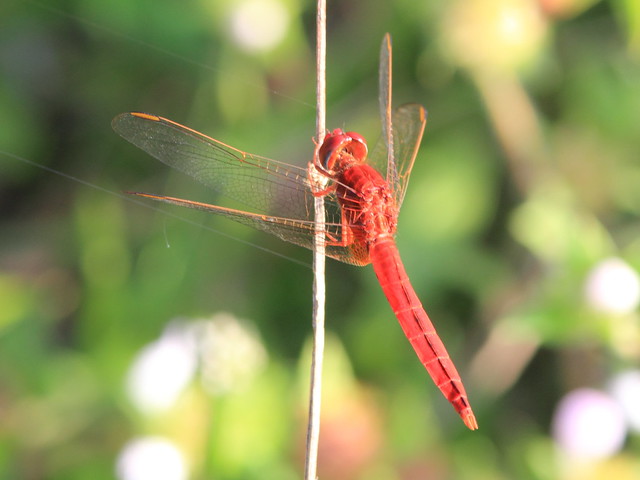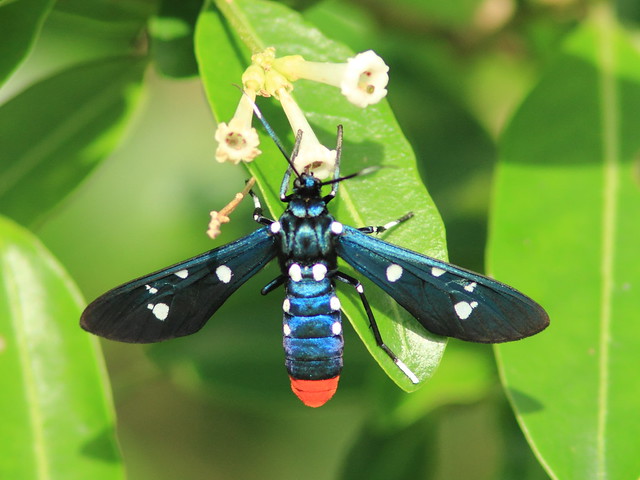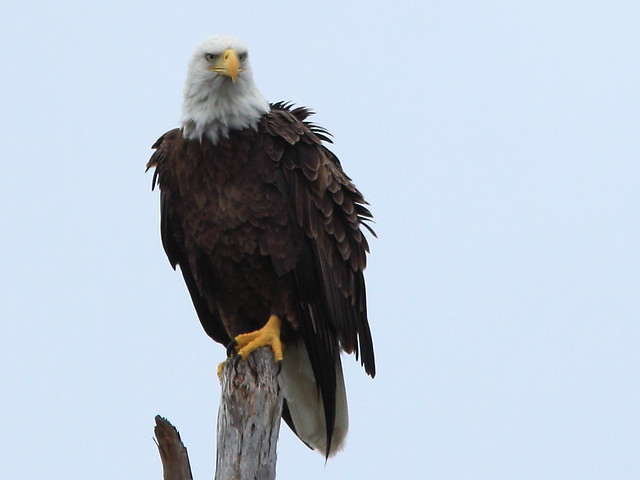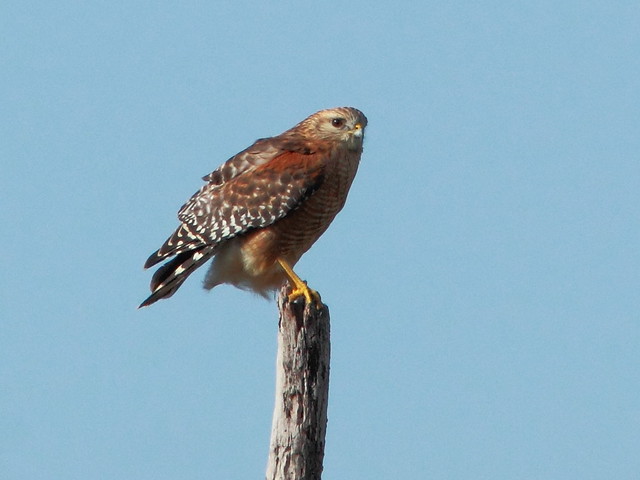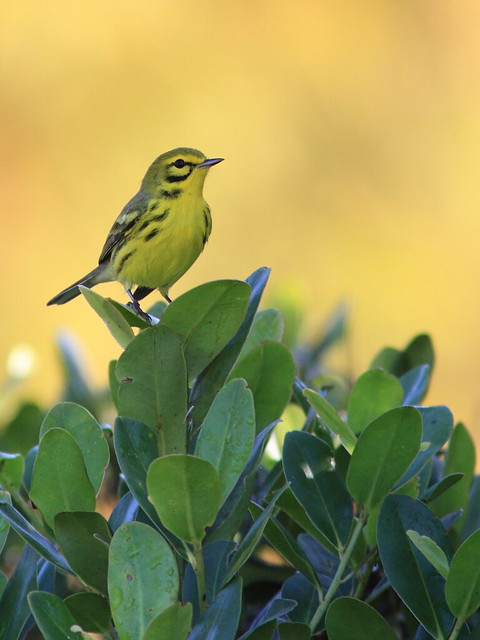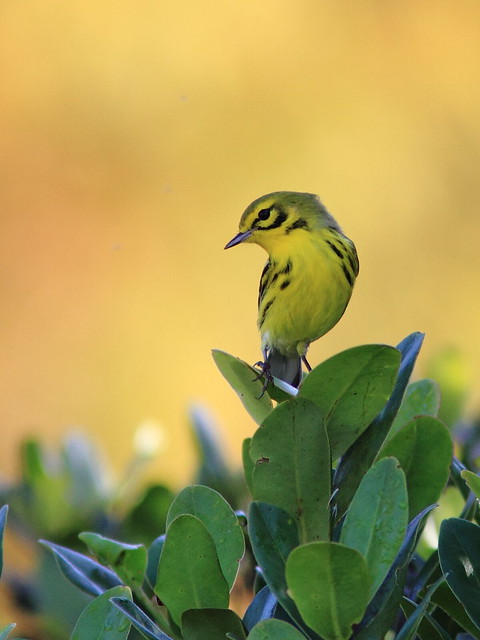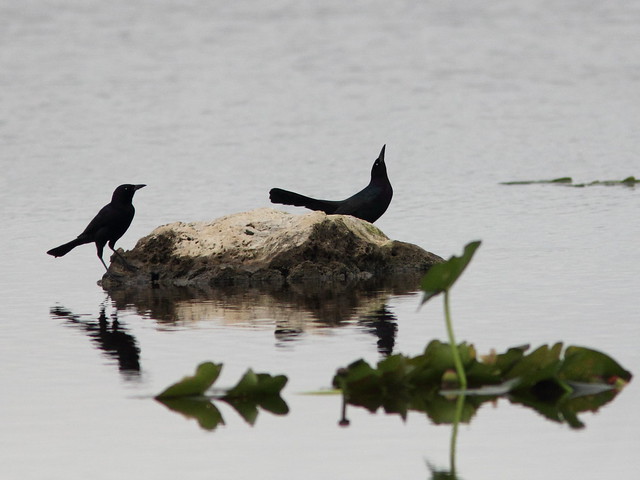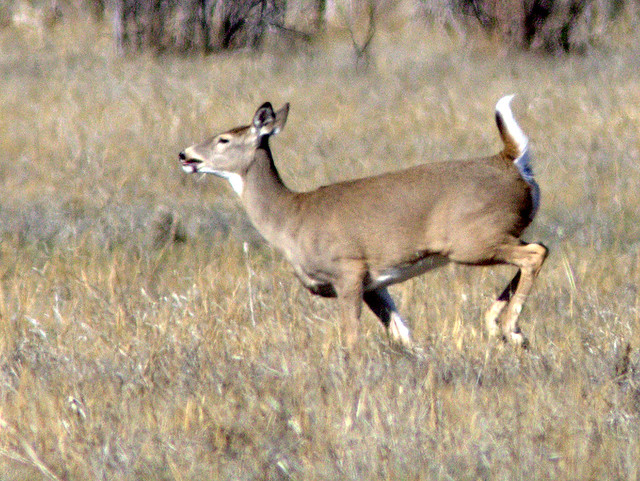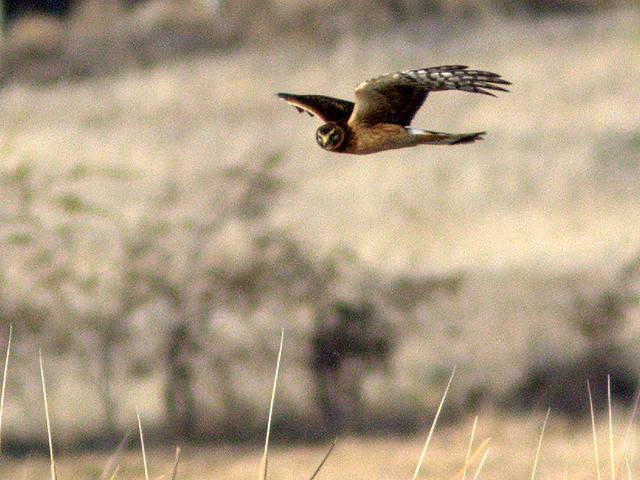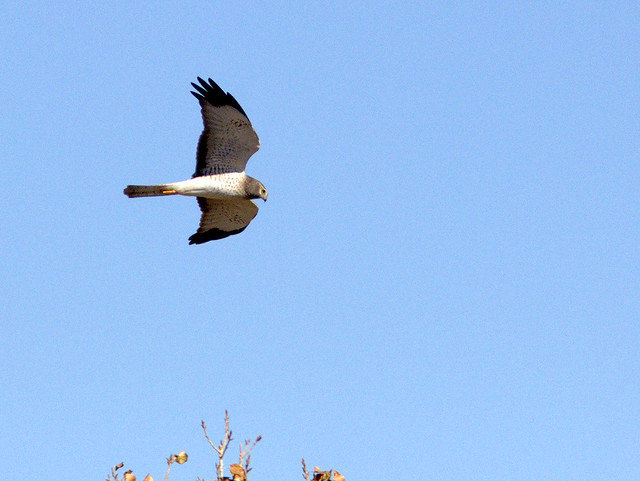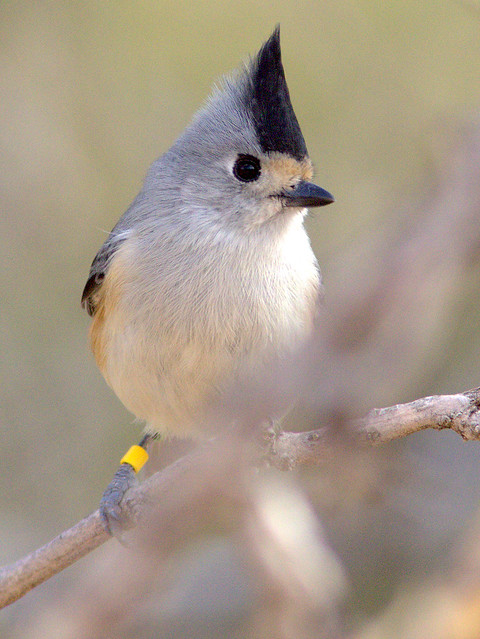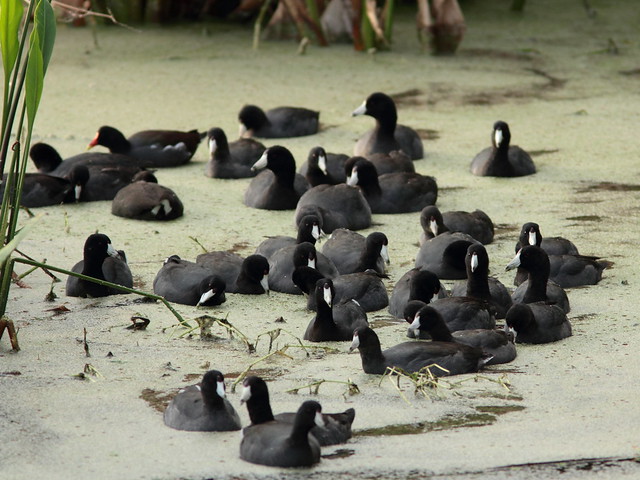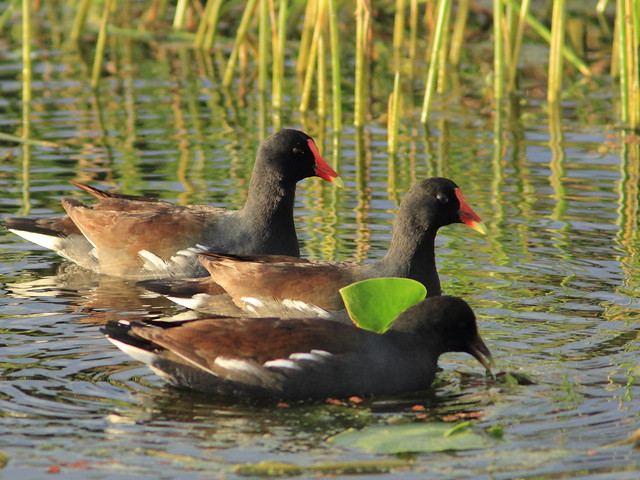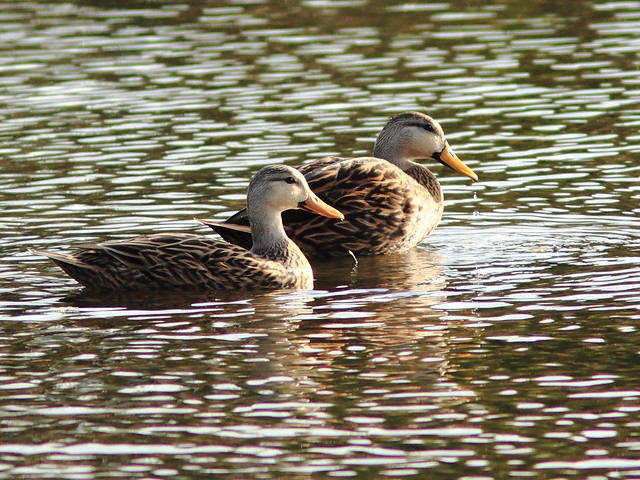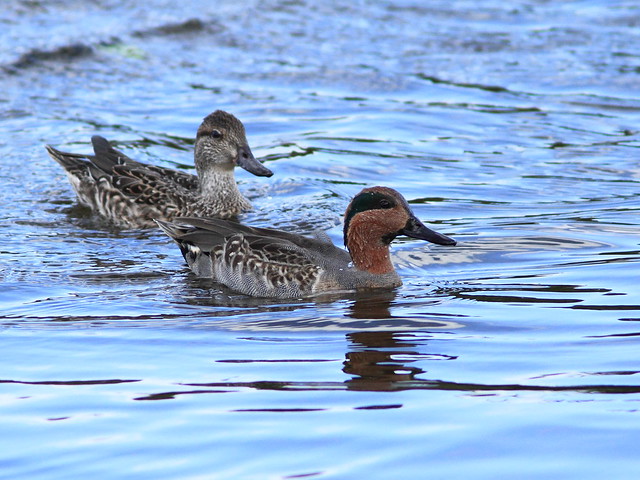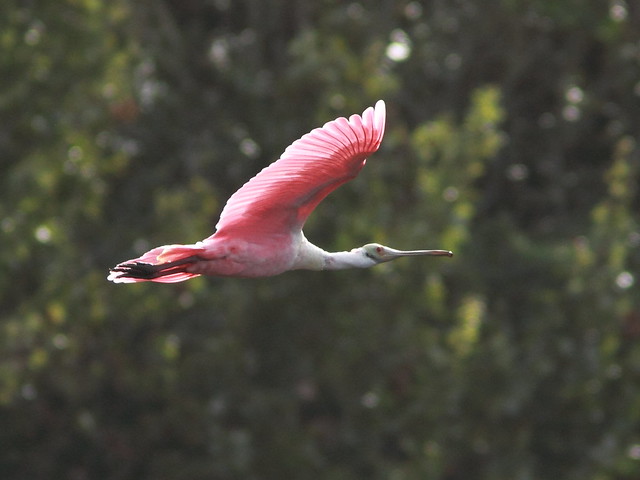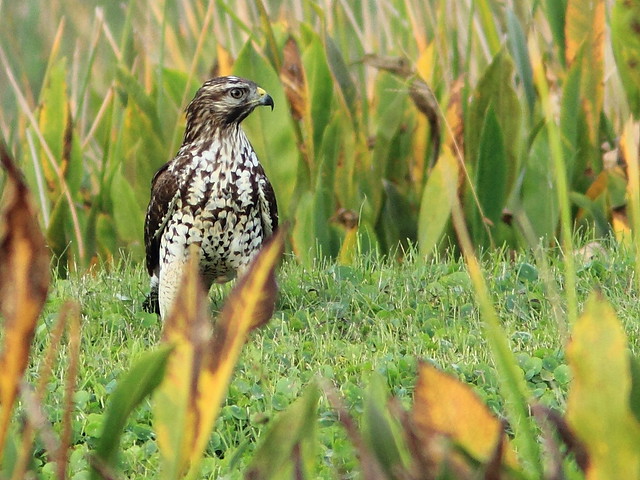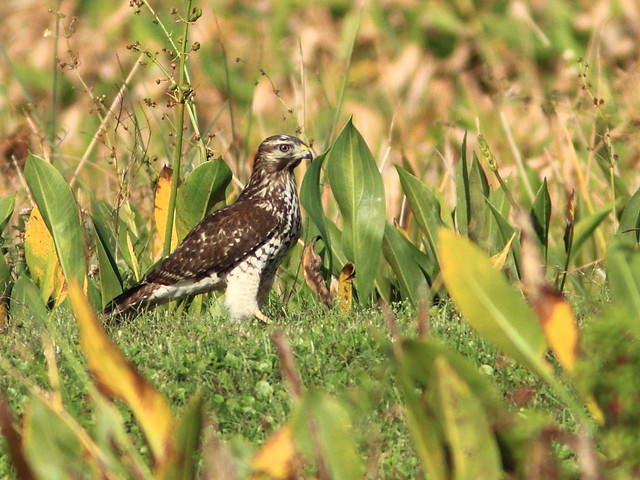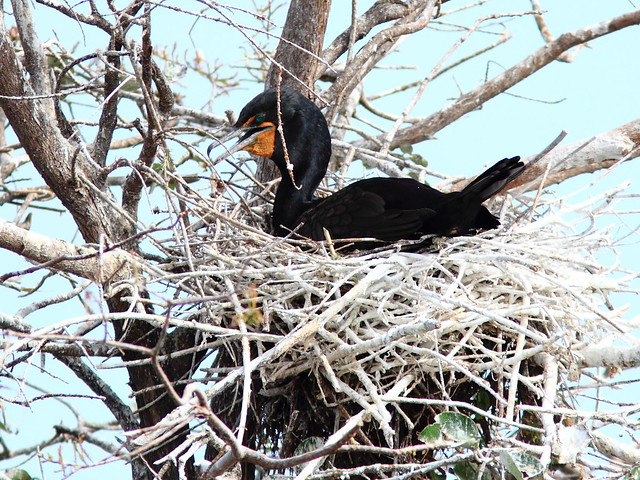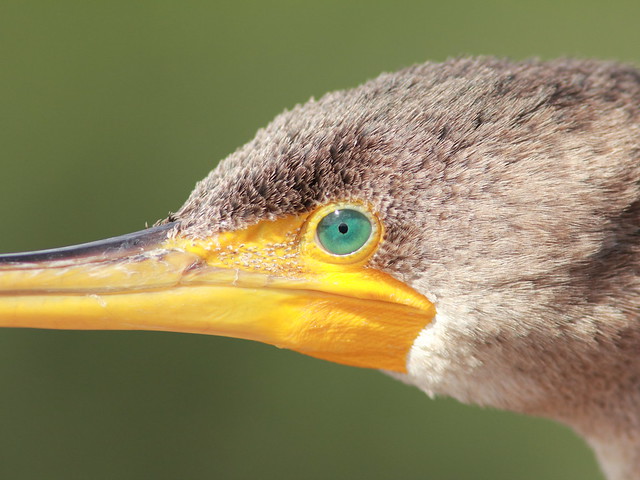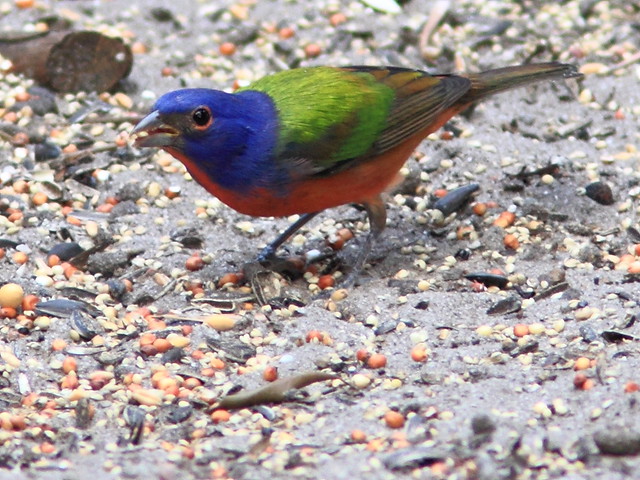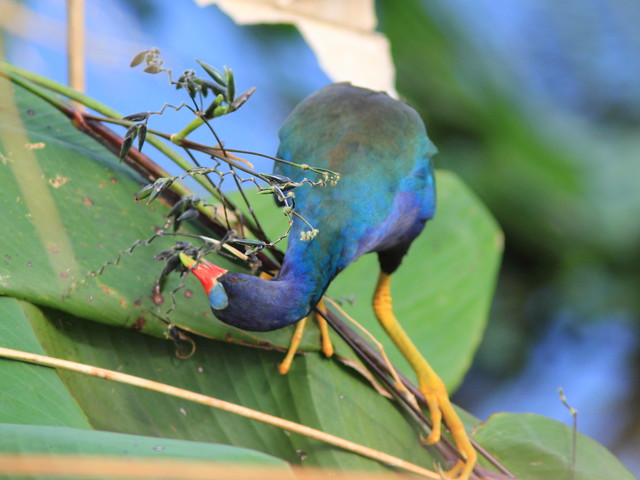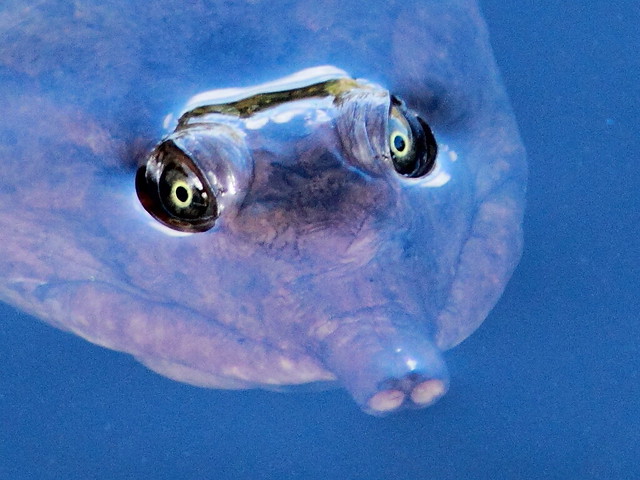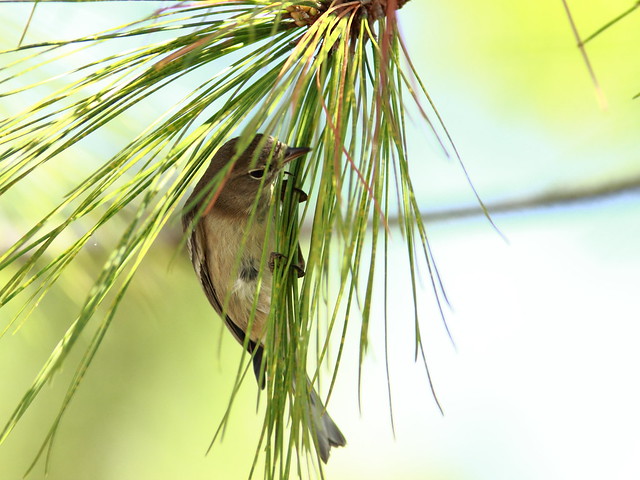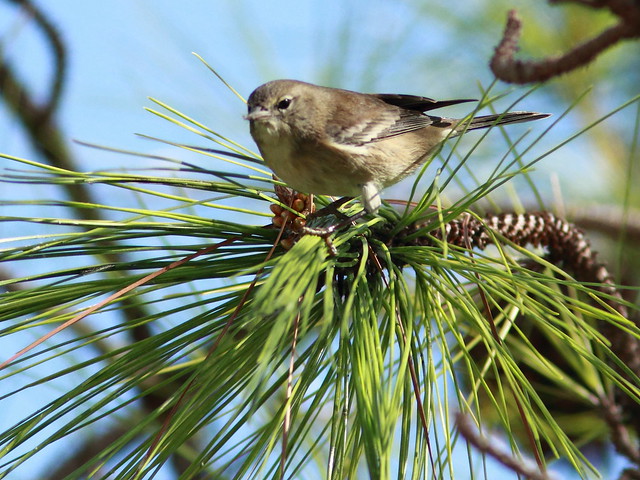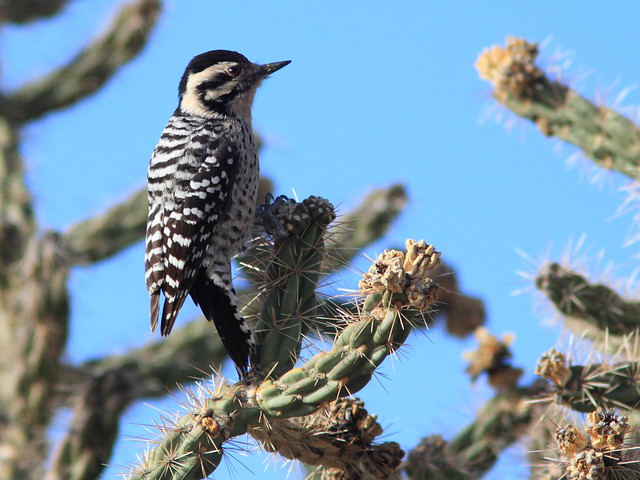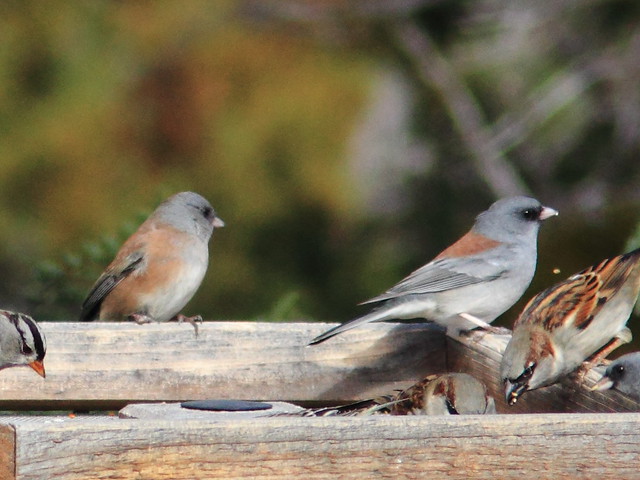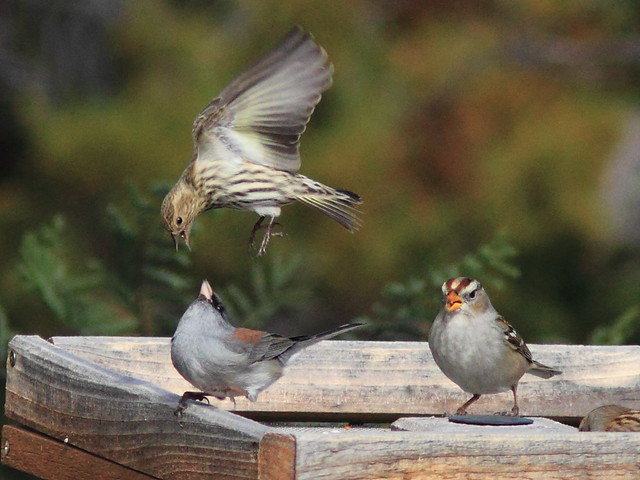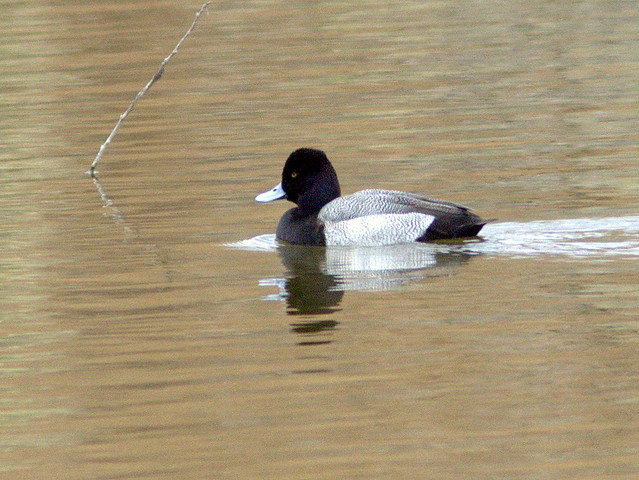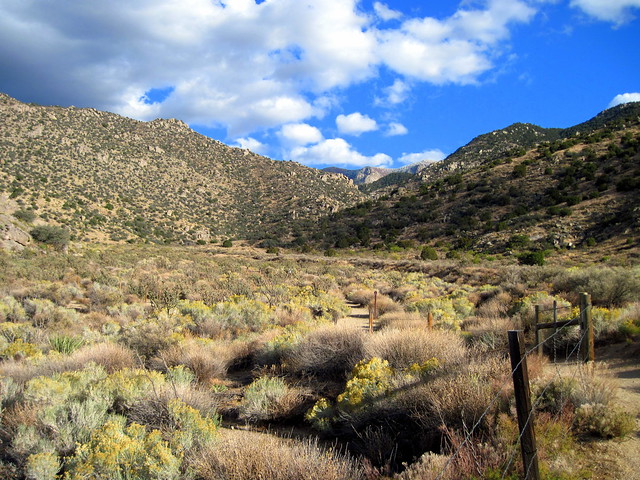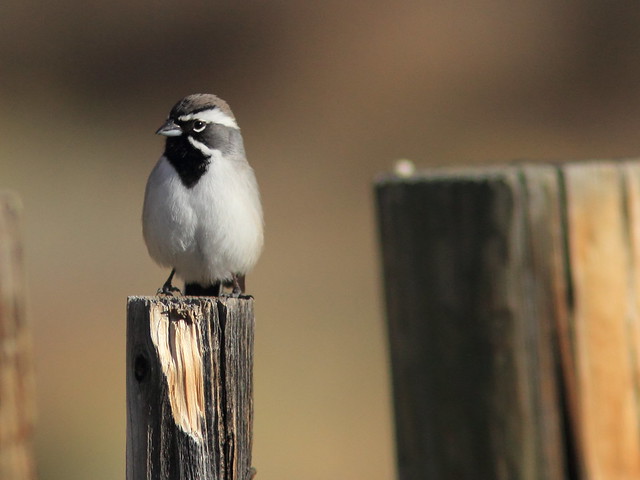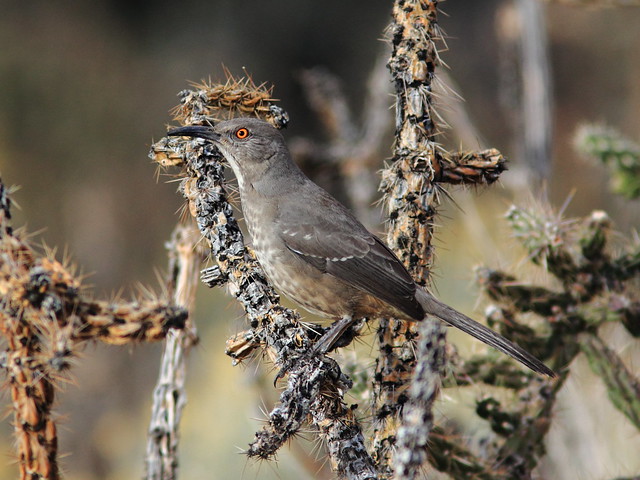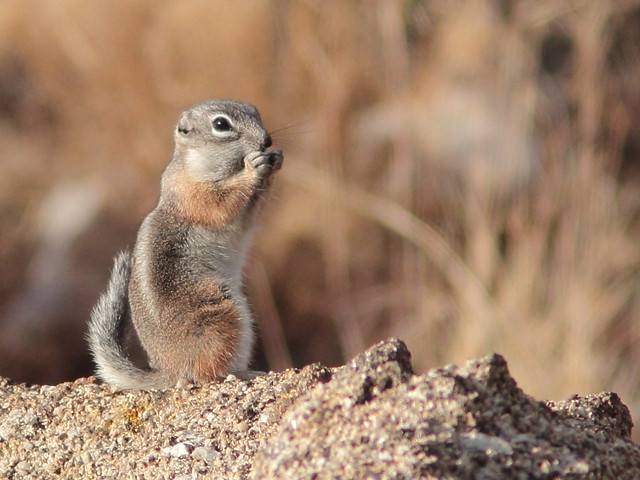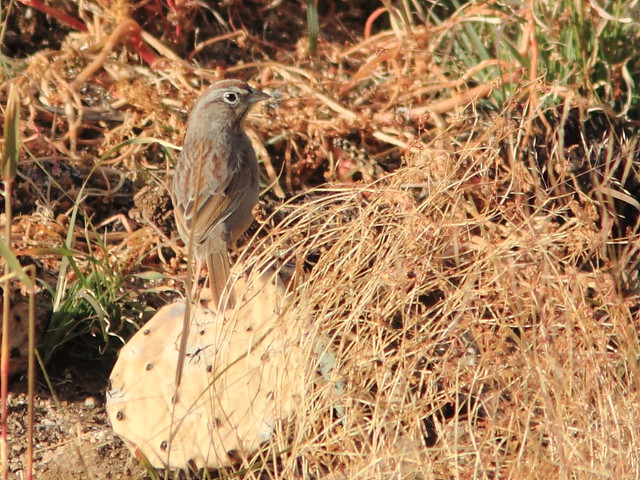Posted by: Ken @ 7:40 am
It’s best to approach each day in the field with expectation and a sense of wonder. That way, even if birding is slow, you will not be disappointed, and will find beauty in the commonplace. One morning last week was no exception. Just before sunrise, the sky held the promise of a few showers, but the radar showed none headed our way. An unexpected phone call and the need to address a friend’s health concerns made us over an hour late for our walk.
It was too late for me to look for the Bobcats, as they usually are only out around sunrise. In a way this was a blessing, as I have become rather obsessed with getting better photos of the adult and her two cubs, and feel compelled to get out while it is still dark, and then wait for about a half hour for them to show. In the meantime, Mary Lou usually goes on without me. More often than not I fail to see them, and I’m missing out on the “power walk” that normally precedes my photo sessions. So, this morning we got in our walk, at least the first half, before I started falling behind and exploring.
The usual Great Egret was foraging in the wet prairie next to the gravel road that accesses our local patch of wetlands.
The egret flew to a treetop, probably waiting for us to continue on down the road.
This Little Blue Heron peered out through the lakeside vegetation. I was going to trash this shot until I realized that its eyes were in good focus.
Birding turned up nothing unusual. A pair of Killdeers were moving along the road in their usual run and stop, run and stop fashion. I’m hoping they plan to stay and raise a family this spring.
Here is one of the Killdeer chicks from a previous season.
Palm Warblers, their long legs an adaptation for foraging on the ground, flew up into the roadside shrubs as we passed by.
When the birds are not out and about, it is much easier to notice the butterflies and dragonflies. Julia longwings (Dryas julia) were out in large numbers. This is a fresh male.
Female Julias are almost always tattered and torn, damage probably inflicted by competing males. It was a bit unusual to find a nearly perfect specimen.
Closely related Zebra heliconians (State Butterfly of Florida with the musical scientific name of Heliconius charitonius) congregated on a Lantana in full flower.
A colorful exotic Scarlet Skimmer (Crocothemis servilia) perched on a twig. An Asian native, it was accidentally introduced to Florida and Hawaii, probably on potted plants.
Walking home, a large and angry-looking wasp-like insect almost flew in my face. I had never before seen such a creature. Was it new to science? It looked “armed and dangerous.” I cautiously approached it to document it for later identification. I was amazed to learn that it was not a wasp at all. It was a Polka-Dot Wasp Moth (Syntomeida epilais).
a diurnal moth that does a great imitation of a wasp. Its appearance
acts as a warning to predators. While it does not sting, it is poisonous
due to its diet as a caterpillar.
Later, I showed this photo to Graciela, our seven year old granddaughter who had just arrived from Chicago, asking her if she thought this “wasp” could sting her. She nonchalantly said, “Oh, Grandpa, that’s not a wasp, it’s a butterfly!” I was amazed and asked her how she knew that. She said she learned it on “Wild Kratts,” a childrens’ nature show on TV. She added that it was an example of mimicry that makes a harmless insect look like a poisonous one. Elaborating on this, she said that some butterflies mimic Monarchs to look as if they are poisonous too. Rather timidly, I mentioned that this was actually a moth, not a butterfly. She looked closely at the photo and said that a moth has feathery antennae, which this one lacked!
I hurried to catch up with Mary Lou, as we had to do some shopping in
preparation for the arrival of house guests. The drive to Wal-Mart
provided us the opportunity to make a couple of brief stops, to check
out the local Bald Eagle nest and also visit nearby Chapel Trail Nature
Preserve.
Our local eagles have set up housekeeping in the same nest that we now have been observing for five breeding seasons. We are quite certain that the first egg was laid on December 11, when the female suddenly started sitting low in the nest. Two days before, I captured this image of her roosting near the nest.
When we visited on December 16, I first thought the nest was empty, but after about 15 minutes the female stood up to change position and also probed down underneath her, probably to rearrange one or more eggs.
A Red-shouldered Hawk roosted near the eagle nest.
At Chapel Trail, birding was also quiet. We turned up a couple of common species, but this male Prairie Warbler was uncommonly beautiful as it perched against a backdrop of Cypress trees that were just beginning too turn golden brown.
For a searchable index of earlier ROSYFINCH RAMBLINGS posts, follow this link
During our recent visit with our son and his wife and five children in Canyon, Texas, we got in some very good birding. Our three older grandchildren guided us on local walks in their neighborhood, and we visited a local park as well as Buffalo Lake National Wildlife Refuge in nearby Umbarger.
Canyon’s Southeast Park had a pond that contained lots of waterfowl, among them two species that are quite similar, the Canada and Cackling Geese. The latter are smaller than Canada Geese, and have disproportionately shorter necks and bills. The Cackling Geese tended to stay together in a single flock and I had a difficult time trying to get the two species to pose together to allow a comparison of their identifying features. Formerly considered as a single species (along with other variations among Canada Goose populations), these two species were officially split when the American Ornithologists Union published the 45th AOU Checklist in 2004. Of the eleven subspecies that made up the Canada Goose complex, seven were allocated to the “large-bodied” Canada Goose (Branta canadensis) species and the other four to the Cackling Goose (Branta hutchinsii) species. Read more in David Sibley’s analysis at this link
In this photo, three of the larger Canada Geese are in the foreground, and those behind them are mostly Cackling Geese.
In flight, these Canada Geese (or, as their shorter bills and necks may suggest, the nearer two are Cackling Geese) lined up precisely.
Knowing that the following photo was taken in northern Texas makes it easy for me to point out that the big blackbird is not a Boat-tailed Grackle, so common around my Florida home, but rather a Great-tailed Grackle. The former is found along the Atlantic and Gulf coasts, and is strongly associated with water, while the Great-tailed Grackle ranges in the interior southwestern US. Their voices are distinctively different– the Great-tail makes very weird noises– grating, rattling and even some calls that sound exactly as if the bird is rubbing its wing feathers together.
For comparison, here is a recent photo of Boat-tailed Grackles in their typical habitat, near our Florida home.
The Texas Panhandle is experiencing its worst drought in over 50 years. Lakes are drying up and the water table has fallen severely. Buffalo Lake was quite large, and attracted huge flocks of ducks and wading birds when I first visited there in the early 1990s. Now it is almost completely dry. Even without the water, the Refuge has extensive grasslands and wooded areas.
White-tailed Deer abounded. This doe bounded across a field in front of us.
Although the grandchildren each tried to be the first to spot a deer or Wild Turkey, they were quite good at pointing out the raptors. We saw a Peregrine Falcon, American Kestrels and several Red-tailed hawks. Northern Harriers were abundant, but all were either brown females or immature cinnamon-colored birds. A with owls, their facial disks help them locate prey by amplifying sound. Hearing the faintest of squeaks, harriers have been know to plunge blindly into dense grass and come up with an entire nest of baby mice.
In this species, the smaller gray-colored adult males are less commonly seen, and are said to make up only about one in seven to twenty individuals sighted in the field. They occasionally mate with multiple females, but most are monogamous. Because of the relatively large number of immature birds, in which the sexes are quite similar, adult males are greatly outnumbered. Indeed, mis-identification of immature Northern Harriers as females probably accounts for the widespread belief that their sex ratio is heavily skewed toward females. Between 1971 and 1980, at four hawk watch banding stations in north-central and northeastern states, 90% of 1256 harriers captured during migration were juveniles, but among adults the sex ratio of males to females was close to 1:1 (Reference). A large California study found that, over a 24 year period (1960 - 1983) , the female to male ratio averaged 1.1 : 1 (with an annual variation of 0.8 to 1.6 : 1) (Reference). This is so interesting, as I used to think that there had to be a lot of unattached non-breeding females left over, which would confer no evolutionary advantage for the species.
Our eldest grandson sighted this beautiful male Northern Harrier when it was some distance away, giving me plenty of time to get my camera into action.
Both Eastern and Western Meadowlarks are present at Buffalo Lake, but this one’s gurgling song (which I interpret as saying “Look at me, I’m a meadowlark!”) was very different from the sweet whistles of the Eastern species.
On the second full day of our stay, we drove south several miles to Palo Duro Canyon. Palo Duro Canyon State Park occupies 29,182 acres of the northern portion of the Palo Duro Canyon, which is 120 miles long and as much as 20 miles wide, with a maximum depth of more than 800 feet. Palo Duro Canyon has been described as the second largest canyon in the United States, after the Grand Canyon, which is 277 miles long, up to 18 miles wide, and 6,000 ft. deep. A fork of the Red River carved the canyon through multicolored layers of sandstone, shale and stiltstone. The oldest, deepest layers are bright red. They were deposited during the Permian Period, some 248-290 million years ago, and show up very well in the deeper valleys.

Behind the Palo Duro Trading Post, a wildlife viewing blind provides an excellent view of a water feature and feeders. Moments after we entered the blind, we were delighted by the arrival of a Golden-fronted Woodpecker.
We had a close-up look at his reddish-brown eyes.
Soon, several Dark-eyed (Slate-colored) Juncos flew in.
A White-throated Sparrow and a male Northern Cardinal shared space on the waterfall…
…while a female cardinal watched from her perch in a juniper.
A Spotted Towhee was quite timid and refused to come down to the feeder.
A Fox Sparrow was a nice find for us.
This Sage Thrasher looked down from a treetop.
We then hiked down into a beautiful side canyon.
Here, we found several Black-crested Titmice.
Most of the titmice wore leg bands.
Some were color-banded, indicating that they were subjects of some kind of behavioral research.
Previously regarded as two races of the same species, the Black-crested Titmouse (Baeolophus atricristatus) and eastern Tufted Titmouse (Baeolophus bicolor) were officially split into separate species. Palo Duro Canyon is in the line of demarkation between these two forms, and perhaps the researchers are studying the degree of hybridization.
Posted by: Ken @ 12:23 pm
Birds and birders flock to some unseemly places. As a kid in New Jersey, one of my favorite birdwatching areas was an open dump in the Hackensack Meadows. If the wind was right its odor carried up to a mile. Aside from the innumerable gulls, crows and rats it attracted, its remote location provided ideal habitat for sparrows and raptors. Happy to say, that very dump gained the more respectable name of “landfill,” grew to become “Mount Trashmore, ” and now my mountainous “dump” is known as Kingsland Outlook, part of Richard W. DeKorte Park, famous as a birding hotspot
My first duty assignment after I got drafted in 1966 was El Paso, Texas. Here, the Fort Bliss sewage ponds provided a large expanse of water, an oasis in the desert environment that attracted a great variety of water birds. In those days, the stench from the primary treatment basin was often unbearable, but cattails grew around the clear water in the settlement ponds, and surrounding shrubs and trees harbored resident and migrant land birds. Back in those days, these wetlands seemed a hidden gem, where I rarely met another birder, but now they enjoy the prominence accorded to a major wildlife refuge.
Two of the most accessible and spectacular locations to easily see a representative sample of South Florida’s wetland birds are less than an hour’s drive from our home, and both are sewage treatment areas. Located not far from each other in western Palm County, they are Green Cay and Wakodahatchee Wetlands. Since both are on very large tracts of land, the tertiary settlement ponds are crystal clear and far removed from the primary treatment plants. Both have extensive and well-maintained boardwalks that traverse open wetlands and hardwood islands.
This past weekend I visited both, beginning at Green Cay, where a Bobcat with four very young kittens had delighted photographers only a few days before. See Florida Blume’s Flickr slideshow of the mother and her cute little cubs at this link.
We failed to see the Bobcats, but, as usual, we were overwhelmed visually by the number and variety of birds that surrounded us as we followed the boardwalk across the wetlands.
Near the entrance, a conglomeration of coots dabbled in the duckweed.
Common Gallinules (ah, that echo from the past sounds better than “moorhens”) were second in abundance only to the American Coots.
Ducks paraded by, two by two, starting with a pair of Mottled Ducks…
…followed by a pair of Green-winged Teal…
…and a couple of male Blue-winged Teal.
A lone Roseate Spoonbill lifted up in the distance and flew out of sight.
Several birders had long discussions about the identity of this juvenile raptor, sitting on a berm. Was it a Broad-winged or a Red-Shouldered Hawk? The dilemma was solved when the bird took flight, as it showed comma-shaped white sub-terminal wing patches, characteristic of the latter species.
An immature (as indicated by its orange underparts) Northern Harrier gave me fits as it swept by repeatedly. I so wanted to get a front-end photo of its owl-like facial disks, but it moved so fast that I couldn’t focus properly each time it sped towards me. I had to settle for passing shots.
This Snowy Egret was nicely back-lighted,
Green legs and a black-tipped gray bill distinguished this immature Little Blue Heron from the egrets.
An Anhinga flew over.
Double-crested Cormorants were nesting near the boardwalk.
A young cormorant flashed its emerald-green eyes.
Several Painted Buntings enjoyed the seed that had spilled out under one of the feeders.
At Wakodahatchee, an acrobatic Purple Gallinule sported some of the same colors as the bunting (click on photo to select more images of the gallinule’s gymnastic talents as it climbed up to pick flowers and seeds).
The eyes of an otherwise submerged Soft-shelled Turtle broke the surface tension of the still water.
A flock of over a dozen Pine Warblers foraged in the parking lot at Green Cay…
…devouring insects they gleaned from the very tips of the Slash Pine branches.
An immature female Pine Warbler exhibited more somber plumage.
Posted by: Ken @ 2:09 pm
We followed our recent trip to our son’s family home in the Texas Panhandle with a short visit to Albuquerque, where our main objective was to see the rosy-finches at Sandia Crest.
There are many great birding spots in and around Albuquerque. Judy Liddell and Barbara Hussey described them beautifully in their recently released book, Birding Hot Spots of Central New Mexico (See my review here). We only had time to bird a few of them. The City of Albuquerque manages an impressively large number of dedicated Open Spaces.
On our first full day, driving from our lodging in Albuquerque to Sandia Crest House, we encountered rain and low clouds as we ascended the east side of mountain. Since we knew that the temperature at the tip was in the twenties (F). we turned around and birded Tres Pistolas (Three Gun) Canyon.
This unimproved Open Space is just off I-40 in the southern foothills of the Sandia Mountains. This photo illustrates the vagaries of mountain weather. Although the sky is blue here and the temperature is in the mid-forties, it is snowing atop the mountains just a few miles beyond.
On the dirt road leading to Tres Pistolas, we encountered this Ladder-backed Woodpecker, busily foraging in a Cholla cactus.
We saw several Townsend’s Solitaires.
A feeder in the residential area next to Tres Pistolas was remarkably productive. Here, from left to right, a Pink-sided and a Gray-headed Junco, two subspecies of the Dark-eyed Junco, share a meal with a male House Sparrow.
An Oregon Junco also visited the feeder.
A feisty Pine Siskin squabbled with a Gray-headed Junco as a White-crowned Sparrow looked on.
From there we drove down to the Rio Grande Nature Center, where I had been a volunteer docent for eleven years, leading bird and general nature hikes. We parked and immediately walked over to the blind at the east end of the parking lot. We saw several Hooded Mergansers.
Inside the Interpretive Center, we were delighted to see our old friend, Sondra Williamson. Sondra was sitting on the couch in front of the big picture window that overlooks the pond, pointing out and identifying the ducks for visitors. A Ring-necked Duck and a Lesser Scaup provided an opportunity for her to compare their features.
There were several pairs of American Wigeons…
…and a spectacular male Wood Duck, roosting next to the pond before taking a swim.
A female Belted Kingfisher hunted from a perch on an island in the pond.
A Pied-billed Grebe flapped in place.
On our final full day, we again visited Sandia Crest, then explored the western foothills of the Sandia Mountains. Lomas Canyon Open Space provided a nice view of Albuquerque, but was not very birdy.
Embudito Canyon Open Space, not far away, offered a wonderful contrast. It was a bit greener than Lomas. There had been recent reports of a Golden-crowned Sparrow as well as Canyon Wrens.
As we entered the gate at Embudito, we were greeted by at least a half dozen Black-throated Sparrows.
Western Scrub-Jays were common.
Although they can be elusive, Canyon Towhees were abundant and out in the open.
Curve-billed Thrashers sat atop the tallest Cholla branches.
A little White-tailed Antelope Squirrel eyed us anxiously.
A Rock Wren scolded.
Time was running out, as we had a dinner date with some old friends and neighbors. We found neither the Golden-crowned Sparrow nor the Cactus Wren, though we did see a fresh nest belonging to the latter.
Unexpectedly, a Rufous-crowned Sparrow made an appearance. We had great binocular views, but I did not get very good photos.














